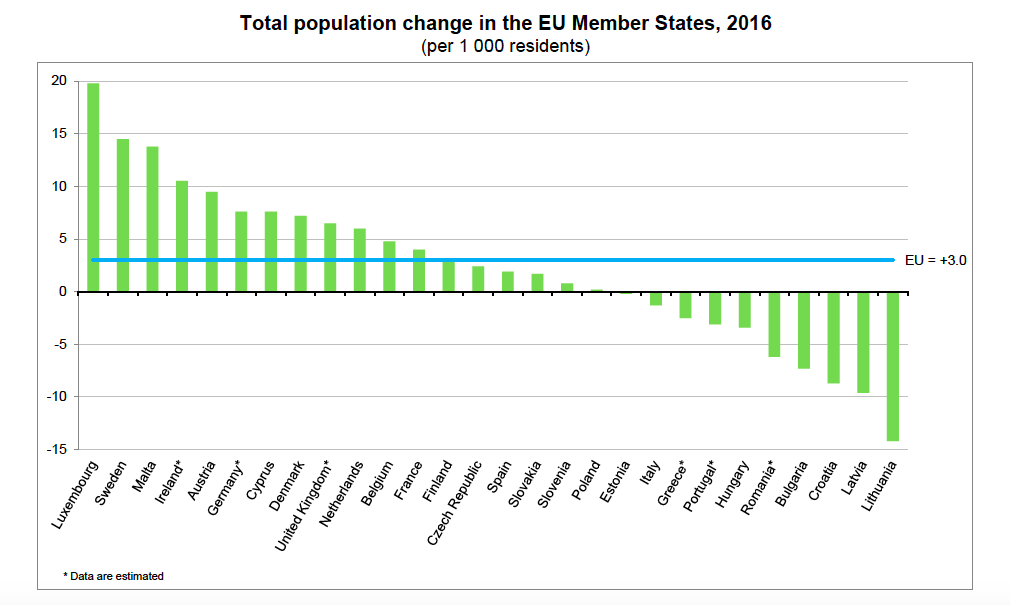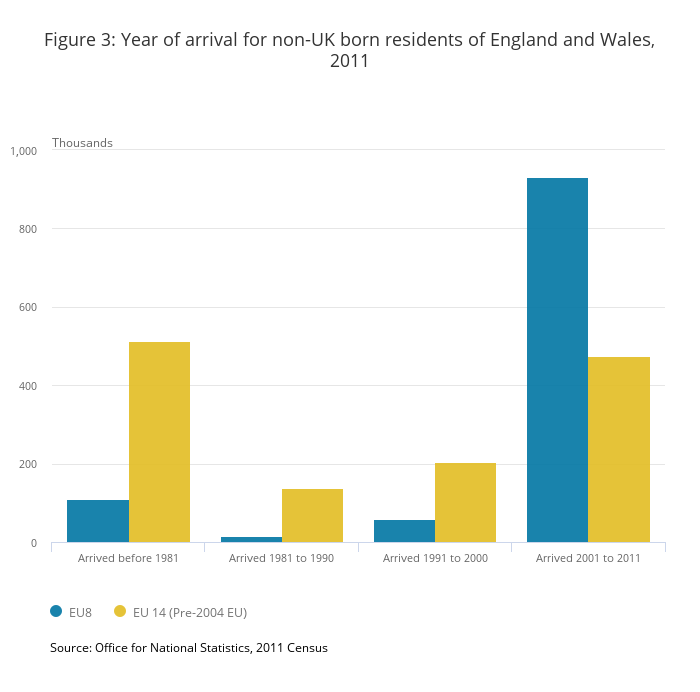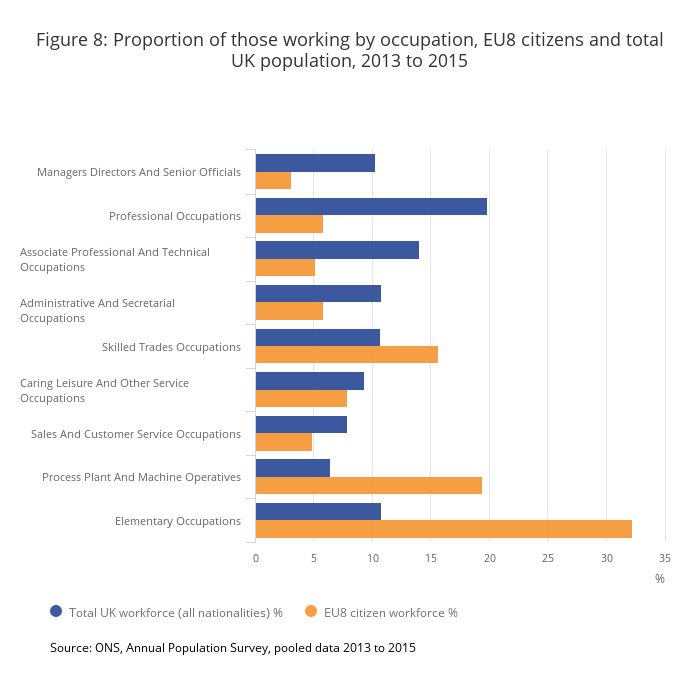Population changes in EU, UK, Central and Eastern Europe
Population changes over time due to births, deaths, news arrivals and departures. Eurostat, the EU statistical office, revealed this week that Europe’s population at 1 January 2017 was almost 512 million (511.8).
This is an increase of 1.5 million compared to 1 January 2016. But the growth is not even across countries. In fact, the number of residents decreased in some EU states, especially in Southern, Central and Eastern Europe.
The growth is generally driven by migration, as the natural change (the difference of births and deaths) was neutral in 2016.
With 82.8 million residents (16.2% of the total EU population), Germany is the most populated EU country, followed by France (67 million), the United Kingdom (65.8 million), Italy (60.6 million), Spain (46.5 million) and Poland (38.0 million).
Last year 5.1 million babies were born in the EU, 11,000 more than in 2015. The highest birth rate was in Ireland, Sweden and the United Kingdom. The lowest was in Italy, Portugal and Greece. There were also 5.1 million deaths, almost 91,000 fewer than the previous year. Ireland, Cyprus and Luxembourg had the lowest death rate. Bulgaria, Latvia and Lithuania the highest.
Ireland (with a natural change of +7.1‰) remained the EU country where births most outnumbered deaths, ahead of Cyprus, Luxembourg, France and Sweden.
Eighteen countries recorded population increases and this is partly due to immigration from within and outside the EU. The largest increases were in Luxembourg (+19.8 per 1,000 residents), Sweden (+14.5‰), Malta (+13.8‰), Ireland (+10.6‰), Austria (+9.5‰), Germany and Cyprus (both +7.6‰), Denmark (+7.2‰), the UK (+6.5‰) and the Netherlands (+6.0‰).

Source: Eurostat.
The largest decrease was in Lithuania (-14.2‰), Latvia (-9.6‰), Croatia (-8.7‰), Bulgaria (-7.3‰) and Romania (-6.2‰). All these countries show high emigrations rates.
Lithuania, for example, saw a growing number of people leaving the country, although the economy is doing well. A large proportion (45.8%) chooses the UK as destination. Analysts attribute the decision to depart to inequalities in living standards, the desire to seek better opportunities and perhaps to make the move before Brexit, as stricter immigration rules will apply after the country leaves the EU.
UK and Central and Eastern Europe
The UK Office for National Statistics, in a separate publication also issued this week, analysed data related to people from Central and Eastern Europe living in the UK and of British living in the “EU8” (Poland, Lithuania, Czech Republic, Hungary, Slovakia, Slovenia, Estonia and Latvia).
Taking as average the years from 2013 to 2015, the ONS estimates that 1.3 million citizens of EU8 nations live in Britain. The Polish community – the largest – is estimated at 813,700. In comparison, the number of British citizens resident in the EU8 is 14,100.

Eighty per cent of people from EU8 countries resident in the UK and in working age are employed. The group represents 4.4% of all UK workers in distribution, hotels and restaurants (225,400 EU8 citizens) and 6.3% (186,500) of manufacturing. A large portion of citizens from the Czech Republic (31%) work in banking and finance. A total of 83,200 people from the EU8 work in public administration, education and health.
In Britain, there are 88 citizens in working age from Central and Eastern Europe for each pensioner from the same group of nations, according to the Office for National Statistics. Previous analysis showed that 40% of EU8 nationals are over-educated for their occupation.

On the other hand, 72% of British citizens in the EU8 are in working age. 42% of the total are resident in the Czech Republic. The Department for Work and Pensions pays UK state pensions to some 6,000 individuals in EU8 countries, but that includes EU nationals who previously accumulated pensions rights in the UK.
Note: The ONS analysis considers unilaterally the UK versus 8 Central and Eastern European countries and does not consider other trends at play, e.g. migration within the EU8, or from the EU8 to other EU countries such as Germany, or the inverse proportion of migration from the UK to countries like Spain.
Claudia Delpero © all rights reserved.
Photo via Pixabay.




